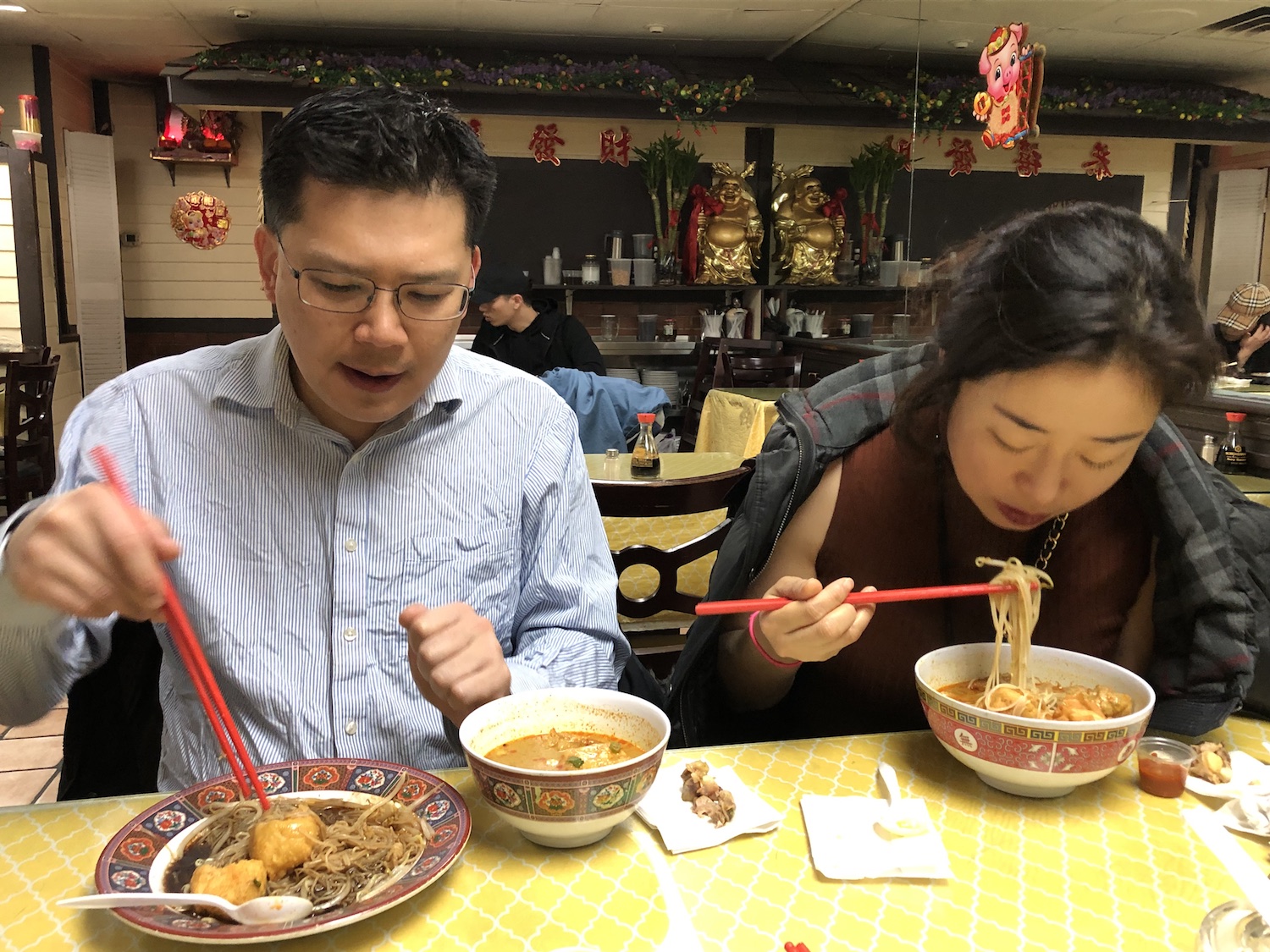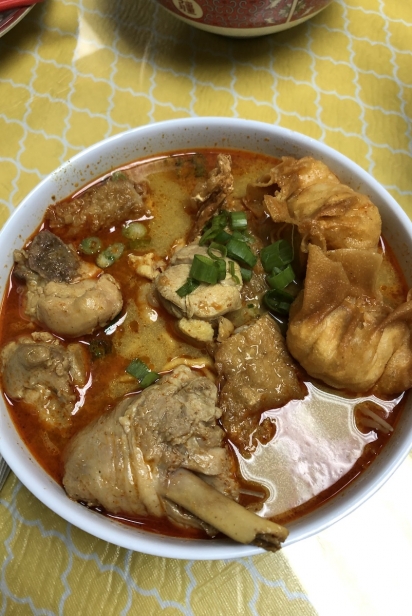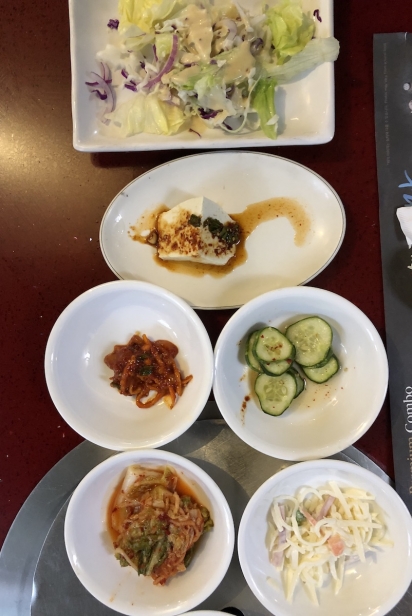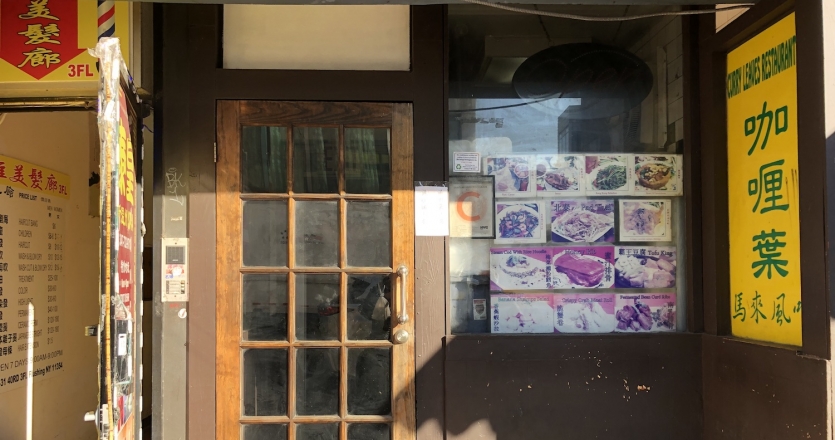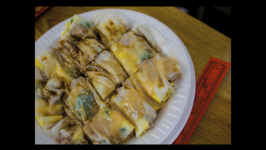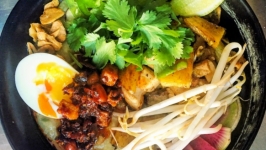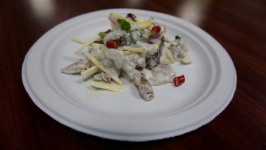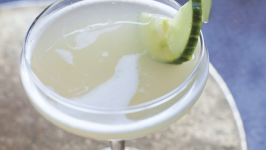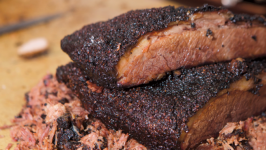Two Flavors of Flushing: Old-school grit survives amid gentrification, deliciously
In 1990s-era Flushing, if a late night of revels left you feeling peckish your best bet might have been to go straight home and make a slice of toast. Today, an army of hungry shift workers, a substantial population of reveling international students and flocks of tourists arriving back late after a day exploring Manhattan have prompted some eating establishments to save their best fare for the late-night crowd.
With gentrification having touched every block of downtown, new “curated” food experiences are proving popular. Much of what is left of the gritty, bustling, heady crush of humanity that defined old Flushing hasn’t so much gone as it has migrated underground. It is in its eating establishments as much as on its streets that these competing incarnations gnash at each other, jostling for a position in this rapidly changing neighborhood.
Years of early mornings and late nights for his medical practice and community work have given Taehoon Kim, founder of Regen Acupuncture, the inside know-how to find the perfect dish for any craving.
The COOP
The COOP is part of an arcade of Asian restaurants that make up One Fulton Square, one of the many recent upmarket developments in downtown Flushing. While the décor is firmly urban, industrial chic, there’s little that’s gritty about the place.
There are plenty of Korean fried chicken places in Flushing too, but the COOP, a self-described gastro pub, stands out.
“There are more Korean fried chicken places in Korea than there are McDonald’s in the world,” said Kim, a Flushing resident since 1988, as he ordered a plate of their signature fried chicken.
People come here for the craft beers on tap; the fresh, sophisticated cocktails, such as the Thai ginger margaritas; and the happy hour $1-apiece oysters, but the Korean fried chicken is the real draw.
“You have to get half and half,” Kim adds. He’s referring to the choice between garlic and spicy fried chicken. When the wings arrive, it’s hard to stop at one or two. Served with sides of cooling pickled radish and sweet corn, the spicy wings live up to their name. “Korean chicken is crispier on the outside and soft, tender and juicy on the inside,” Kim explained, picking up his fourth wing. It’s hard to disagree.
Open from noon to 3am most days, the COOP is popular with young Asian hipsters, and a great spot to catch up with friends, eat delicious bar food and enjoy a drink or two.
Hot Kitchen Sichuan Style Hot Pot
Just around the corner and a world away from the COOP is Hot Kitchen Sichuan Style Hot Pot. This is pure old Flushing, a family-owned restaurant that has been on this same site for years. Here the owner, Chen Min, is the wife of the chef, Kong Xiang Lin. Neither speaks English, and nor do most of the patrons.
“One night after work, very late, I saw them delivering huge bags of chilies here. I asked myself, ‘Why are they using so much chili?’ I had to come and see for myself,” Kim said.
Sichuan food, known for its distinctive pepper and heat, is often dry, and Hot Kitchen’s trademark dish, Laz Zi Ji or Sichuan Chongqing Spicy Chicken, is no exception. It is tender pieces of chicken richly spiced with dry, hot chilies. The spice and heat unfold on the palate in layer after layer of complex flavor. Its depth and richness bang against the heat of the chilies. Kim ordered pork and pickle soup to accompany the chicken. The aroma of pickles rose from the steaming bowl. There is so much to savor, including the ever-present undertone of Sichuan pepper.
Famous in China since 1998 when he won a major award for his cooking, the chef brings this satisfying cuisine to homesick immigrants and foodies alike.
Hot Kitchen Sichuan Style Hot Pot is open from 11am to 11pm every day.
Located on Union Street, the traditional border between Flushing’s Chinese and Korean communities, this 24-hour Korean barbecue restaurant is thriving where others have died after the nearby municipal parking was sold to a developer.
The restaurant’s survival is as much a testimony to its savvy owner, Jung Heon Kim, as it is to the quality of the food. Faced with a falloff in Korean customers, she adapted her menu to embrace Chinese tastes, allowing it to thrive as a hub for couples, families and late-night revelers in search of a bedtime nosh.
Kim’s favorite dish is gam ja tang, a rich, spicy, satisfying potato soup. Its power is derived from a rich pork broth made from neck bones and skin. These flavors permeate every bite of potato.
While the sides are somewhat pedestrian, the soup itself is worth the visit. A meal here will set you back about $80 for two, but the soup comes in at only $17 plus change. A perfect late-night feed.
Curry Leaves, Malaysian Restaurant
Stepping into Curry Leaves through the undistinguished entrance on 40th Road, Flushing’s notorious red-light district, is like stepping through the looking glass. The decor is sparse and simple, the tables unembellished and the walls humble weatherboard. The food in this long-standing Flushing restaurant, on the other hand, is a revelation.
Take the Malaysian breakfast noodle soup known as curry laksa. Looking into a glass cabinet filled with pre-fried tofu, fish cakes and dumplings seemed unpromising, but Kim’s enthusiasm overcame any resistance to order. The flavors were astonishing: rich, complex and delicious. Breakfast is served daily until 11am to immigrant workers, tourists and hard-core foodies.
Kim’s wife, Lea, insisted on joining him, unable to resist the chance for a bowl of this breakfast standby. The process is straightforward: Line up at the counter. Choose a broth, and then noodles (yellow wheat or white rice). Next, the toppings, which are unrecognizable to the uninitiated. Armed with the house hot sauce, head to a table. The first bite will transport you to the back streets south of Asia.
Curry Leaves is part of the fabric of old Flushing. “There will always be people who remember this restaurant from long ago,” said Lea Kim. The cost of this meal was around $7.
It’s hard not to wonder how this well-kept secret will survive new Flushing’s rent hikes. Kim believes it will, and hopes that the two downtowns will come to an understanding, perhaps over a bowl of this amazing breakfast soup.
The COOP
Hot Kitchen Sichuan Style Hot Pot
San-soo-kap-san
Curry Leaves


